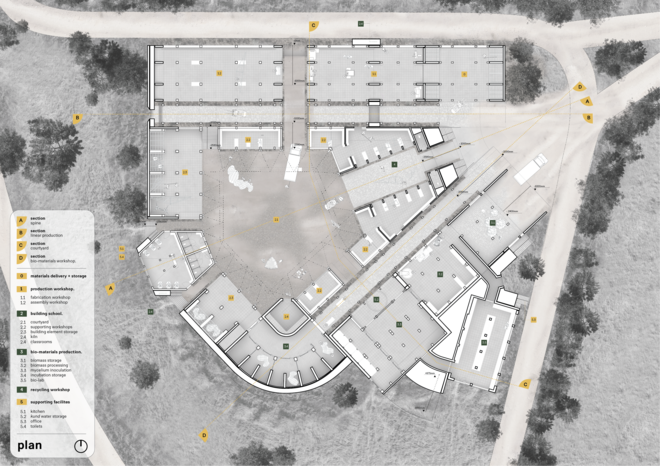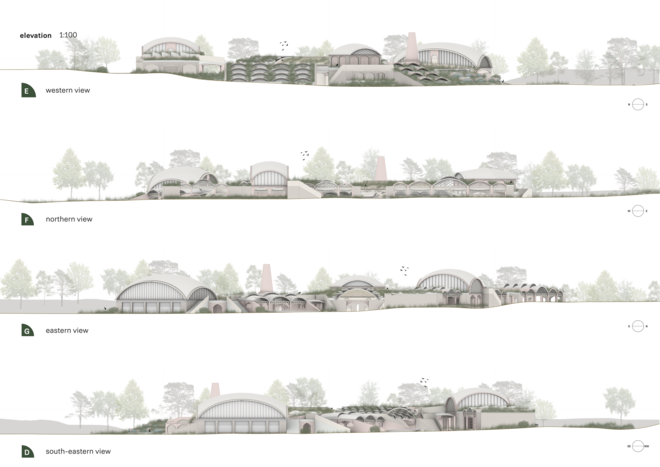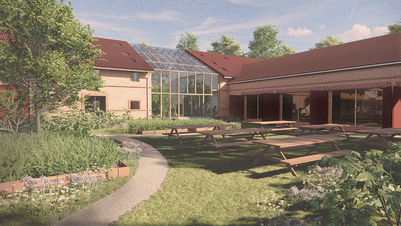

THE DHUN EARTH INSTITUTE
In the desert state of Rajasthan, “Dhun Life” is restoring a landscape to reexamine the relationship between the natural and built environment. Responding to the tension within the dilemma of growing city and constructing ecology, this project proposes a workshop and trades school immersed within the natural environment of Dhun for the production, testing, and dismantling of building elements, as an experimental staging area for developing and implementing locally sourced biogenic building materials.
The institute is an ongoing and evolving site for developing, producing, and experimenting with locally produced bio- and geogenic architectures. As both a space for, and itself a subject of, developmental production, the Dhun Earth Institute seeks to both facilitate its program, and embody the knowledge developed within its porous walls, becoming a living and growing example of the the architectural relationship between ecology and settlement it is built to construct.

90% of the materials used for the institute's construction are extracted on the construction site, or cultivated in its immediate vicinity.
Built from mycelium-based composite materials grown on local substrates, compressed reinforced earth bricks, rammed earth, wooden grid shell structures, sandstone pillars, and soil. Permanently embedded structures covered in soil and vegetation host local species, while lightweight structures provide shelter from the dangers of the desert sun in a materially efficient way.

Materials arriving via road are distributed and processed through the northern and southern workshop arms, funneling materials into the school courtyard. From the courtyard, building elements are collected to be used for the construction of dhun, stored for future reference or disassembled and reused.



Regenerative Insulation - supporting 3rd semester fieldwork in Dhun
Det Kongelige Akademi understøtter FN’s verdensmål
Siden 2017 har Det Kongelige Akademi arbejdet med FN’s verdensmål. Det afspejler sig i forskning, undervisning og afgangsprojekter. Dette projekt har forholdt sig til følgende FN-mål
















